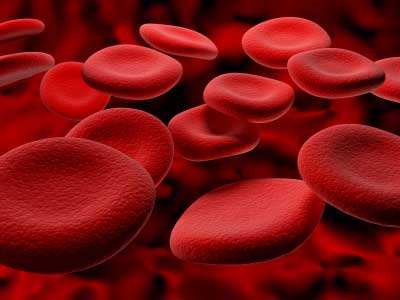First Aid: Blood Loss & Shock

In the next few lessons we will learn what some of the ailments are that you might encounter, and how to assess the condition of a person requiring first aid.
Different levels of injury require different procedures. For example, treating someone for a mild concussion is different than a traumatic brain injury.
Make sure and read through, watch the videos and take the test at the end before you move on to the next lesson.
Important: To get the most out of this first aid course please do not skip ahead. Everything in this course is designed to walk you through the learning process. From understanding your responsibilities and limitations, to what supplies you need and how to use them.
Course Information:
Lesson 2: Blood Loss & Shock
Video Time: 11:23
This Lesson will explain the different levels of Hemorrhaging and types of shock.
More Info On Blood Loss & Shock
Blood Loss - Hemorrhaging- Types Of Shock
Blood Loss & Hemorrhaging
You might hear to bleeding referred to as hemorrhaging, this is blood escaping from the circulatory system. Bleeding can occur internally because of injuries to organs or blood vessels, as well as externally cause by such things as lacerations and gunshot wounds. External bleeding can also occur through natural openings like the nose, mouth and ears.
Hypovolemia is the term for a massive decrease in blood volume and blood loss. The volume of blood in a human body to be approximately 7 percent of body weight. An average adult body with a weight of 150 to 180 pounds will contain approximately 1.2 to 1.5 gallons of blood.
To put into perspective how hard our bodies work, in a day your blood travels 12,000 miles, and your heart beats 93,000 times a day, that’s 34 million times a year.
A healthy person can typically endure a loss of 10–15% of the total blood volume without serious medical difficulties. For example, donation blood typically takes 8–10% of the donor's blood volume.
The stopping or controlling of bleeding is called hemostasis and is an important part of first aid that we will learn about in a later module on managing blood loss.
Hemorrhaging is broken down into four classes…
Class 1 Hemorrhage: up to 15% of blood volume. There is typically no change in vital signs and fluid resuscitation (transfusion) is not usually necessary.
Class 2 Hemorrhage: 15-30% of total blood volume. A patient often becomes tachycardic meaning the heart rate rises with a narrowing of the difference between the systolic and diastolic blood pressures. You can read about those here.
The body attempts to compensate by not pumping blood to the extremities like arms and legs and pumping more blood to the heart. Skin may start to look pale and be cool to the touch. The patient may exhibit slight changes in behavior.
Class 3 Hemorrhage: Involves loss of 30-40% of circulating blood volume. The patient's blood pressure drops, the heart rate increases causing shock as capillary refill worsens, and the victim’s mental status worsens. Fluid resuscitation such as saline and blood transfusion are usually necessary.
Class 4 Hemorrhage: Involves loss of above 40% of a person’s blood volume. The limit of the body's compensation is reached and aggressive resuscitation (IV and blood transfusions) is required to prevent death.
It’s important to note that in a post collapse situation there is no magic bullet, if the victim is class 3 or 4 an there is no medical help available the odds or survival become very slim. That being said, you hear all the time about people who shouldn’t have survived something, so it never hurts to try everything you possibly can.
Individuals in excellent physical and cardiovascular shape may have more effective compensatory mechanisms before experiencing cardiovascular collapse. These patients may look stable, have minimal changes in vital signs, and still have low blood flow to the extremities.
Elderly patients or those with chronic medical conditions may have less tolerance to blood loss, less ability to compensate, and may take medications such as beta blockers that can potentially blunt the cardiovascular response.
In short, not everyone is the same, there is no way to measure the exact amount of blood loss and the effects of the blood loss in different victims, but we can do everything in our power to stop the blood loss and prevent further issues.
What is Shock?
The main symptom of shock is low blood pressure. Other symptoms include rapid or shallow breathing, cold, clammy skin; rapid pulse or weak pulse, dizziness or fainting.
Shock is a life-threatening medical condition as a result of insufficient blood flow throughout the body. Shock often follows severe injury or illness.
Medical shock is a medical emergency and can lead to other conditions such as lack of oxygen in the body's tissues (hypoxia), heart attack (cardiac arrest) or organ damage.
Medical shock is different than emotional or psychological shock that can occur following a traumatic or frightening emotional event.
Types of shock
It’s important to remember that there are several types of shock: septic shock caused by bacteria, anaphylactic shock caused by hypersensitivity or allergic reaction, cardiogenic shock from heart damage, hypovolemic shock from blood or fluid loss, and neurogenic shock from spinal cord trauma.
Septic shock results from bacteria multiplying in the blood and releasing toxins. Common causes of this are pneumonia, urinary tract infections, skin infections (cellulitis), intra-abdominal infections (such as a ruptured appendix), and meningitis.
Anaphylactic shock is a type of severe hypersensitivity or allergic reaction. Causes include allergy to insect stings, medicines, or foods (nuts, berries and seafood), etc.
Cardiogenic shock happens when the heart is damaged and unable to supply sufficient blood to the body. This can be the end result of a heart attack or congestive heart failure.
Hypovolemic shock is caused by severe blood and fluid loss, such as from traumatic bodily injury, which makes the heart unable to pump enough blood to the body, or severe anemia where there is not enough blood to carry oxygen through the body.
Neurogenic shock is caused by spinal cord injury, usually as a result of a traumatic accident or injury.
Training & Resources
Below is a link to a PDF with more information about the affects of blood loss to the human body.
Get Started...
Click the button to start the next lesson where we go over radiological, thermal and electrical burn wounds.
Course Home
Click the button to return to the main course page with the list of all the modules in the first aid course.
DISCLAIMER: THIS WEBSITE DOES NOT PROVIDE MEDICAL ADVICE
The information, including but not limited to, text, graphics, images and other material contained on this website are for informational purposes only. The purpose of this website is to promote broad consumer understanding and knowledge of various health topics. It is not intended to be a substitute for professional medical advice, diagnosis or treatment. Always seek the advice of your physician or other qualified health care provider with any questions you may have regarding a medical condition or treatment and before undertaking a new health care regimen, and never disregard professional medical advice or delay in seeking it because of something you have read on this website.





